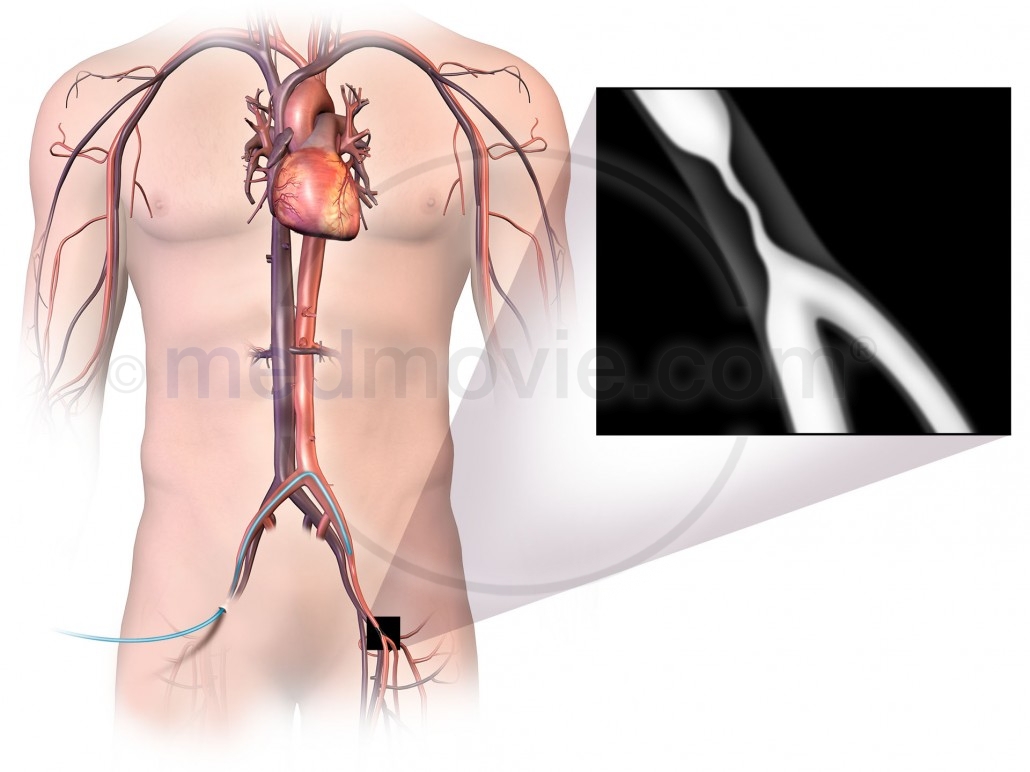Peripheral Angiogram
Request Stock Pricing
A peripheral angiogram is a test used to detect blockages in the arteries of the body other than the heart (coronary angiogram) and brain (cerebral angiogram). The test is done by injecting X-ray contrast (dye) into the blood vessels. This allows X-ray pictures to be taken of the blood vessels. The contrast is injected through a catheter; a long, thin, hollow tube that is inserted into the circulation through a needle puncture and guided to a position that allows the contrast to flow through the suspected blockage. Using this technique, taking pictures of almost any blood vessel of the body is possible.
Request Stock PricingParent Topic: Peripheral Angiogram
Topic Media ID: cvml_0216i
